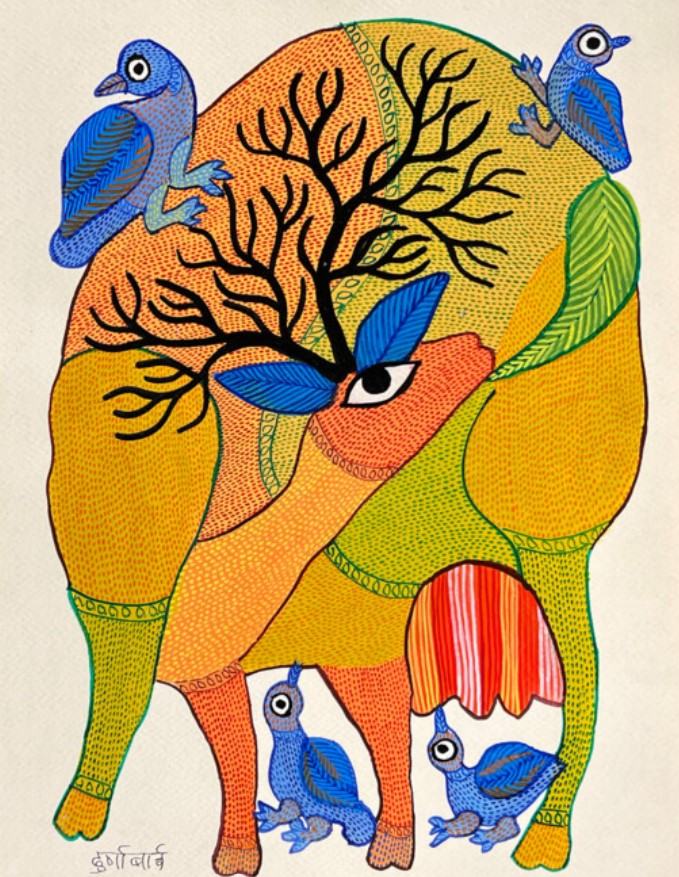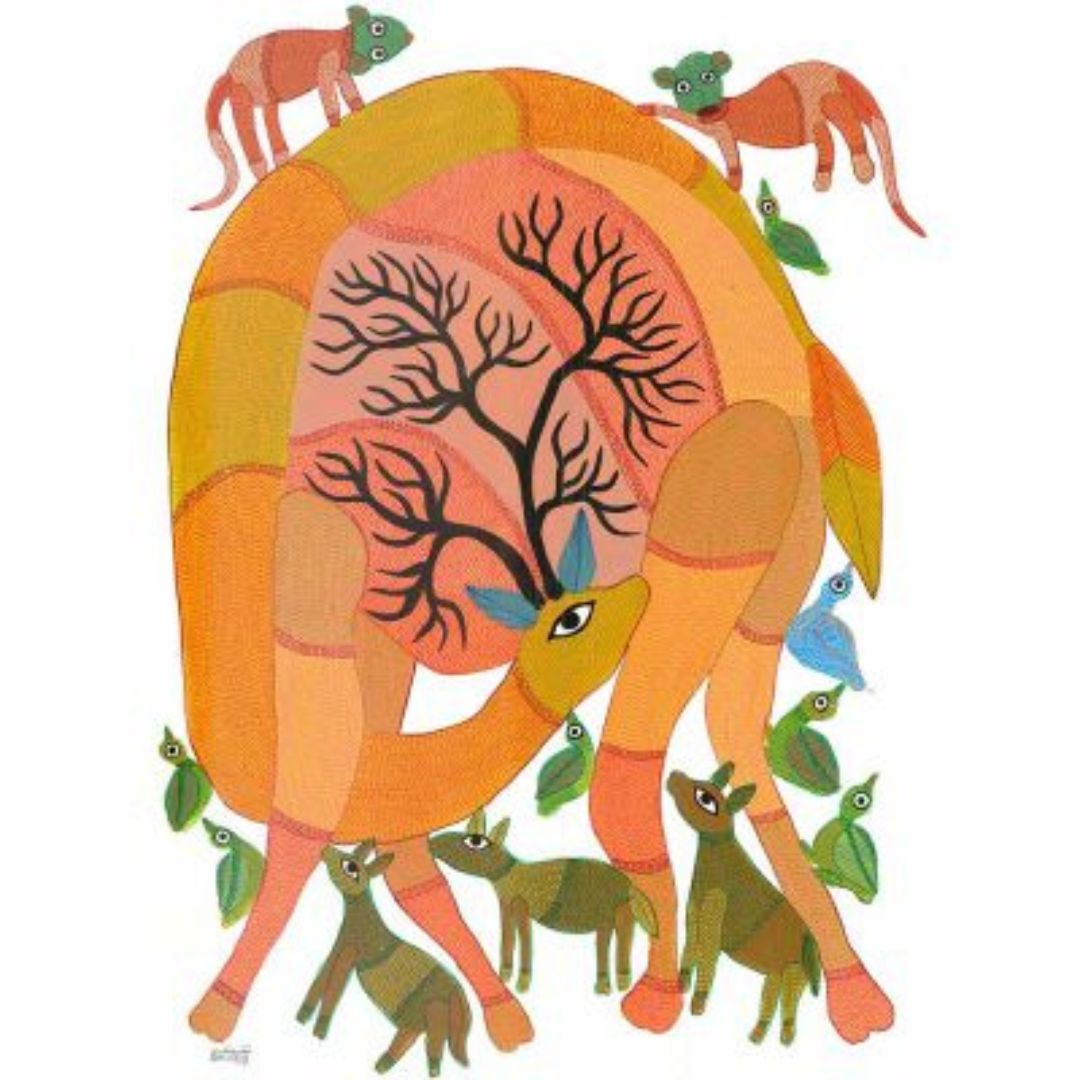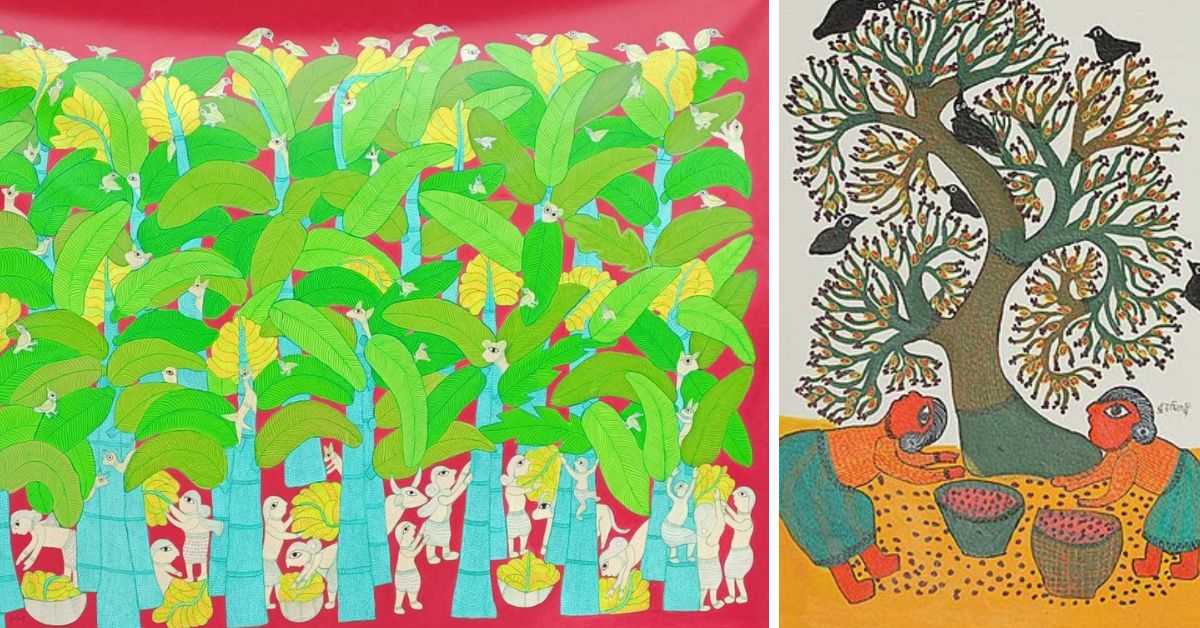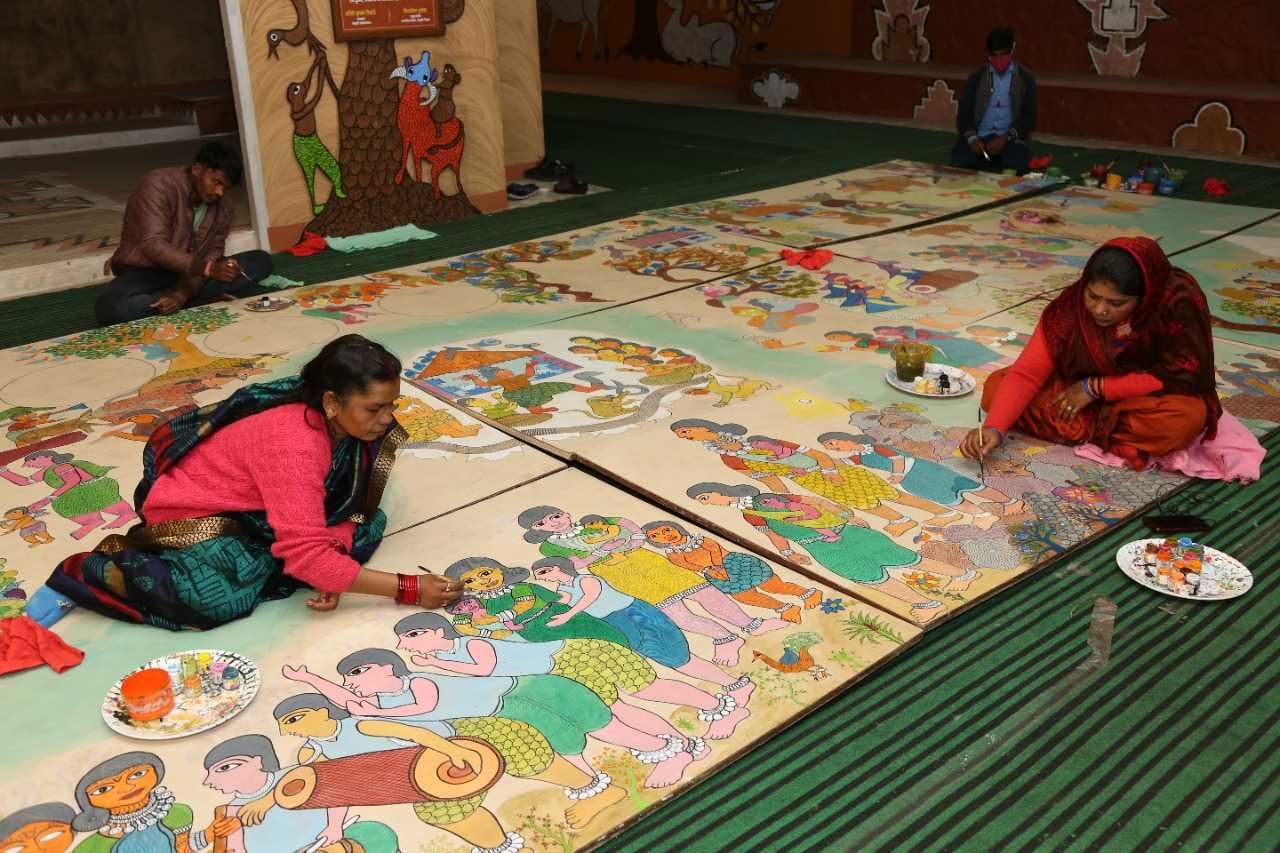At first glance, Gond artist Durgabai Vyam’s Bhopal home would easily pass off as a studio. Bedecked in canvas paintings, with drawings on the mud walls interspersing this art, the home is a riot of colour.
The Dindori-born artist was deprived of a school education — a result of her father’s meagre income — but absorbed things happening around her faster than other children her age. As her dadi (grandmother) would put the last finishing touches to intricate paintings on the home’s mud walls, a young Durgabai watched.
Art, therefore, was her first subject, a love she carried with her through life.
“Growing up in Dindori, I would paint on the walls using white mud (chuhi), red mud, and sometimes even black mud (charcoal black). Festivals and weddings in the village were my favourite occasions since there would be opportunities for me to make dignas (a form of tribal art practised by members of the Gond community) on the home walls,” she shares.
Today, at 50, one would say art is in her genes, as she replicates her grandmother’s style. This time on canvas and walls that are hundreds of feet tall. Vyam’s artistic prowess led her to win many accolades throughout her career, one of the most prestigious being the Padma Shri in 2022.
Finding her niche in the art world
The transition from mud walls to canvas happened in 1996 when Durgabai married Subhash Vyam, a native of Bhopal and a sculptor.

The latter worked at the Indira Gandhi Rashtriya Manav Sangrahalaya — a space that allowed artists to thrive. Here he was assigned the task of making clay and wooden sculptures. It was also here that Durgabai attended her first artists’ camp, an event that gave her dreams wings.
But though art was her love, it took on the role of a profession much later. For this, she credits the stalwart of modern Indian art, a pioneer of Gond paintings and her relative, Jangarh Singh Shyam.
The Madhya Pradesh artist’s name is not a new feature when speaking of tribal art. His signature style of interpreting the Gond community’s myths and beliefs into art paved the way for the emergence of many tribal artists. With exhibitions in Bhopal, Delhi, Tokyo and New York amongst others, Shyam created a name for himself that time would not erase even after his suicide in 2001.
In 1996, the same year that Vyam moved to Bhopal, she recalls seeing a beautiful painting of Hanuman on one of the village house walls. “Who made this?” she enquired. The answer surprised her.
“When I knew it was my cousin Jangarh Singh Shyam who had made the painting, I was inspired. I wanted to try my hand at it,” she says.

From mud walls to metropolitans
Vyam’s art is unflinchingly honest in the story that it tells. Through the colourful landscapes of trees, birds, and nature, there is an attempt to convey a message. Her characters are notorious for exuding almost human-like traits. Her growing up years in Dindori, she says, is the reason for this.
Nature seemed to be her best friend. And everything around her seemed almost life-like. But considering the platforms she has gotten to showcase her work, it has taken on a more dignified and serious avatar.

“My art needs to have a message,” she emphasises. “The common ones are: save trees, save animals, be more mindful of nature…” When nature isn’t the focus, traditions and lores of the village take precedence.
Deities are a common subject of Vyam’s paintings. These include Ratmaimurkhuri — the guardian of the night, Khero Mata — a protector against evil, and Chula Dev — the god responsible for ensuring the household chulha (hearth) always burns.

Her works include the 2018 art installation curated for the Kochi-Muziris Biennale — an international exhibition of contemporary art; paintings at the Mumbai International Airport; art at Azim Premji University Bengaluru; and even at the Indira Gandhi Museum in Bhopal where Vyam painted on a 200 ft wall.
But she holds her first-ever painting dear.
“In 1997, a year after shifting to Bhopal, I made a painting on canvas of gau puja (a ritual popular in villages where deity Kharkhadev is worshipped, asking forgiveness for past sins and bringing prosperity to the family).” She adds that it being her first time painting on canvas, which is limited space in contrast to large walls, she was hesitant. But the painting was loved by all, and today stands at the Government Museum in Chandigarh.

In 2000, Vyam expanded her art canvas. She began making drawings for booklets published by the Eklavya Foundation. “Once they became popular, I was approached by Chennai-based Tara Books for the same.”
But Vyam and her husband proudly declare their most iconic project to be illustrating for the book ‘Bhimayana: Experiences of Untouchability’, which chronicles the life and times of Dr Babasaheb Ambedkar.
In addition to this, the couple have illustrated children’s novels, history fiction, biographies and more. In 2008, Vyam was awarded the BolognaRagazzi award for her illustrations in ‘The Night Life of Trees’.
But even as I ask Vyam about these accolades, expecting an elaborate answer, she shrugs. “I am happy. The awards make me happy. It is a great feeling to see my dignas getting so much love,” she shares.
Edited by Pranita Bhat
No comments:
Post a Comment